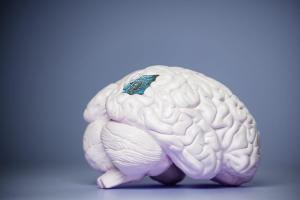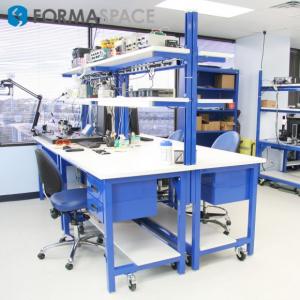Advances in Brain-Computer Interfaces to Help Restore Movement in Nerve Damage Cases
We take a look at promising laboratory research projects in the field of bioelectronic medicine that use Brain-Computer Interfaces (BCIs).
Developing systems that control motor functions is hard, but it’s more challenging to implement a bi-directional sensory feedback loop that allows the brain to interact with artificial sensory inputs.”
AUSTIN, TEXAS, UNITED STATES, October 13, 2022 /EINPresswire.com/ -- In this Formaspace laboratory report, we take a look at promising laboratory research using Brain-Computer Interfaces (BCIs) to help patients recover motor control over their limbs, restore their sense of touch, or gain partial ability to see objects in the physical environment.— Formaspace
Intracortical Visual Prosthesis (ICVP) At Illinois Institute Of Technology (IIT)
Principal Investigator Dr. Philip R. Troyk is leading the efforts to create a neural bypass prosthetic for patients suffering from total blindness, e.g., no light perception capability.
This work is taking place at the Pritzker Institute of Biomedical Science and Engineering located within the Illinois Institute of Technology (IIT) – in partnership with the Chicago Lighthouse, a service organization for the blind, headed by Dr. Janet Szlyk. Funding was provided in part by the NIH’s BRAIN Initiative as well as the DoD and private donors.
Their approach is to bypass the retina and optic nerves entirely. Instead, a custom chip module fitted with electrode stimulators is implanted directly into the brain’s visual cortex, which connects wirelessly to an external camera. These custom modules are manufactured by Sigenics, where Dr. Troyk serves as CEO.
The first patient received the Intracortical Visual Prosthesis System (as it is formally known) in February 2022. The module implanted in the brain has 25 nerve stimulators and a total of 400 electrodes, providing a low-resolution, black-and-white representation of the physical environment. If this proof-of-concept clinical trial is successful, future generations of the technology could be enhanced to incorporate higher resolution and color inputs.
Robotic Arm With Bi-Directional Sensory Feedback At The Rehab Neural Engineering Labs, University Of Pittsburgh
Researchers at the Rehab Neural Engineering Labs, University of Pittsburgh, are investigating ways to help patients living with tetraplegia due to spinal cord injuries (in layman’s terms, quadriplegics) by creating brain-computer interfaces that not only control prosthetic arms via the brain but also provide the user with artificially-generated tactical feedback when touching or grasping objects.
In the field of Brain-Computer Interface (BCI) design, developing systems that control motor functions (such as causing individual muscle groups to contract or relax) is hard enough, but it’s far more challenging – and valuable to patients – to implement a bi-directional sensory feedback loop that allows the brain to respond and interact with artificial sensory inputs that mimic the sense of touch.
To develop the system, researchers implanted multiple modules in the brain. In one direction, they record neural activity from the motor cortex, which is used to control the robot arm. In the reverse direction, tactile “sensations” from the prosthetic arm are sent back to the brain’s somatosensory cortex using a technique known as Intracortical microstimulation (ICMS).
This approach has shown promise, and, as the researchers had hoped, the added tactile feedback allowed the patient to operate the prosthetic arm at twice the speed compared to relying on visual feedback alone, making them comparable to the times of able-bodied persons for these tasks.
Stereoelectroencephalography (SEEG) At Feinstein Institute For Medical Research, Manhasset, NY
Dr. Chad Bouton, who leads the Institute of Bioelectronic Research at the Feinstein Institute for Medical Research in Manhasset, NY, outside of New York City, is a pioneer in the field of neural prosthetics.
Bouton and fellow researchers first demonstrated how to restore control over complex rhythmic movements in paralyzed patients in 2016 using computer-brain interface implants. His team has also developed external therapeutic devices that helped stimulate and “retrain” damaged nerves in the peripheral nervous system – a technology licensed to the medical device company Neuvotion in October 2021.
In Bouton’s newly published research, his lab has demonstrated the ability to stimulate a sense of touch in the hands of two patients with intractable epilepsy.
Restoring a sense of touch in the hands, including the ability to sense temperatures, has proven elusive as it often requires stimulating areas deep in the brain that are hard to reach, such as the grooved areas (sulci) of the cerebral cortex that are hidden under exterior folds (gyri).
The solution that the Bouton team came up with is a long needle-like implant, called a stereoelectroencephalography (SEEG) electrode, that stimulates these deeper areas to facilitate sensory communication with the fingertips in the hands.
Read more...
Julia Solodovnikova
Formaspace
+1 800-251-1505
email us here
Visit us on social media:
Facebook
Twitter
LinkedIn



